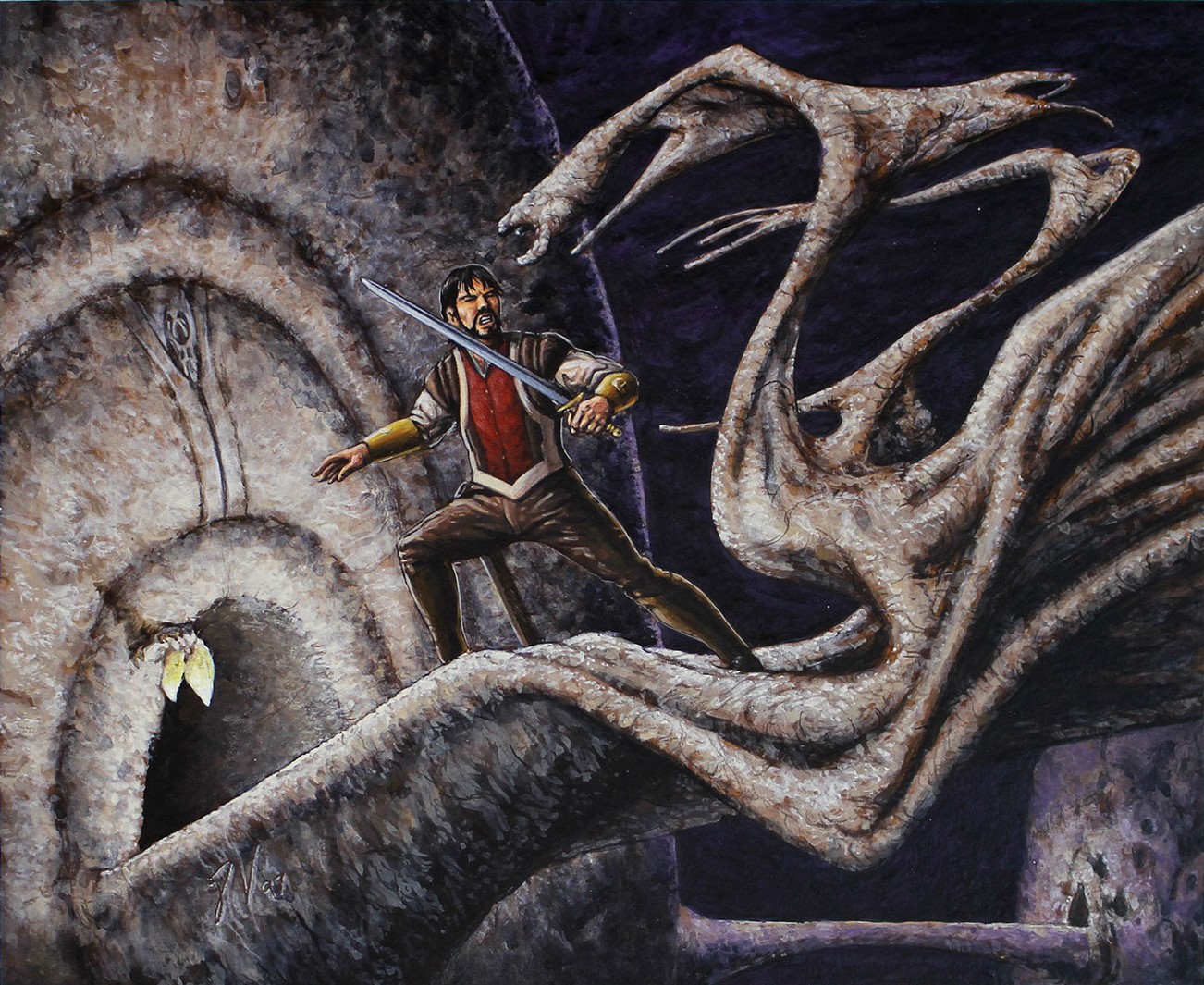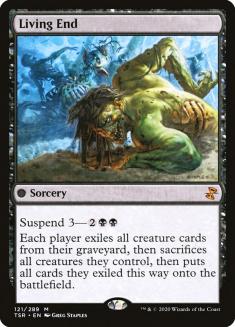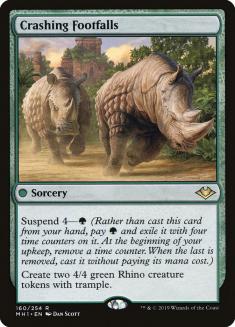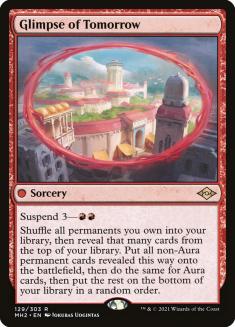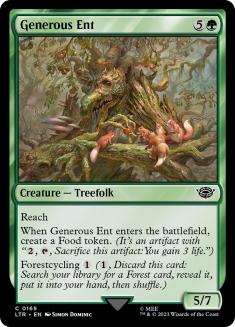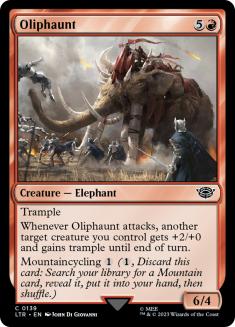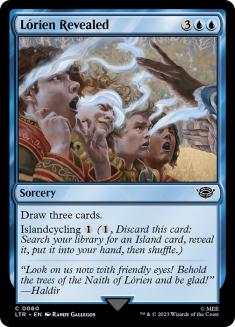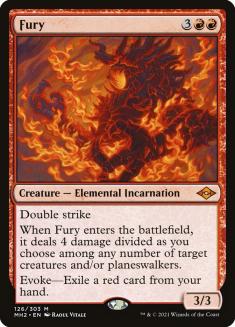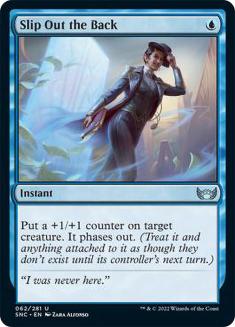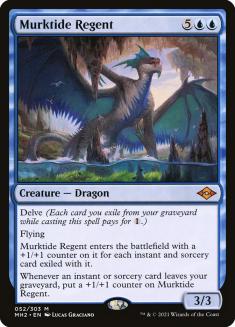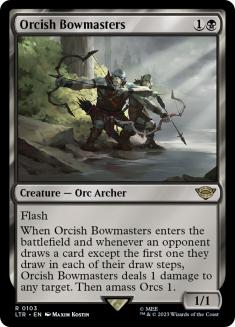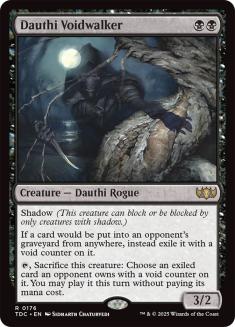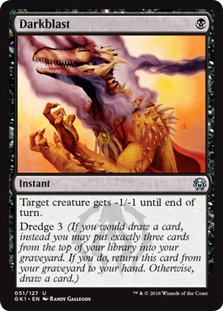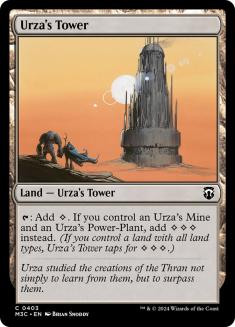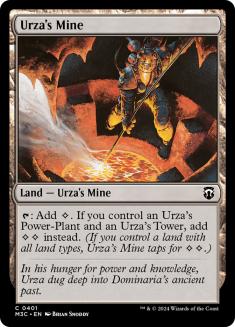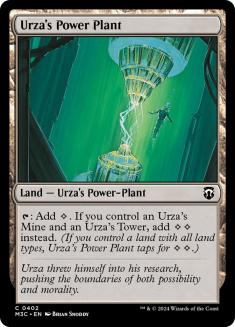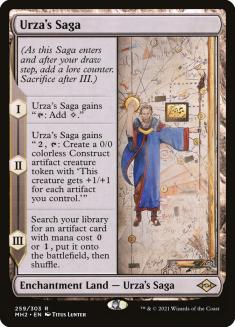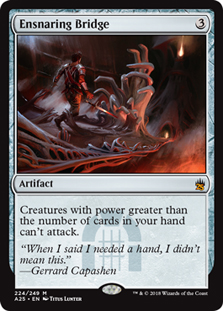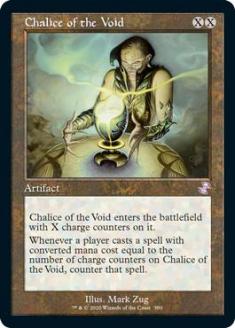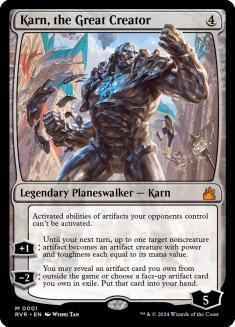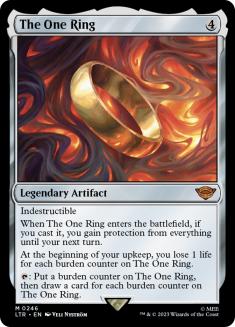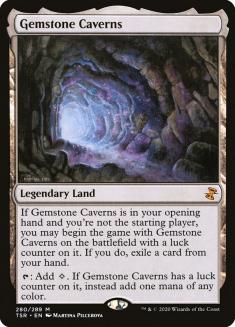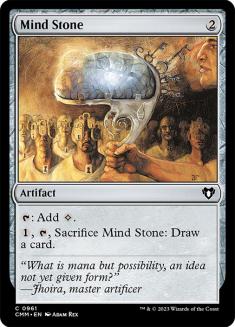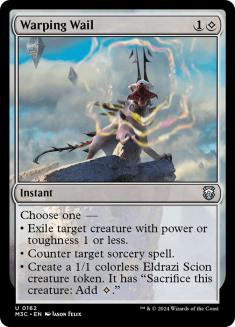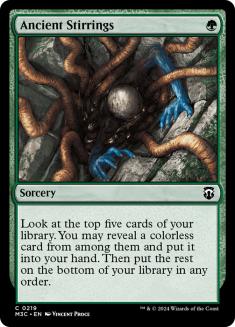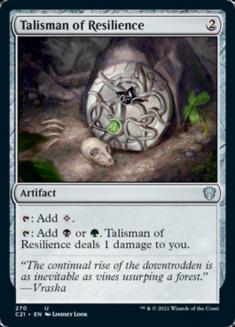One of my favourite parts of each Pro Tour is seeing what the best minds in the game didn’t register. Every team has some mad scientists tasked with exploring the fringe decks of the format and coming up with their own concoctions. Few of these are ready for the big leagues, but they are great for a smaller stage, and some could take a tournament by storm in the future with more polish or the right new printings.
I didn’t fill this role for my team as much as I hoped. I helped others test their matchups against the known decks, and my ‘rogue’ choice of Amulet was as predictable as it gets. When I wrote the first draft of this piece at the airport waiting for my flight to Spain, I didn’t know if I would regret that choice. It’s safe to say I don’t regret it now, but I still wonder if I missed an opportunity.
My list of rejects features some strange twists on familiar concepts.
Glimpse Cascade
Creatures (28)
- 4 Shardless Agent
- 4 Seasoned Pyromancer
- 1 Cavalier of Flame
- 2 Endurance
- 4 Fury
- 4 Wavesifter
- 1 Nissa, Resurgent Animist
- 4 Oliphaunt
- 4 Generous Ent
Lands (21)
Spells (11)

The Cascade decks are a consistent but cyclical force in Modern that all got a surprising shot in the arm from the landcyclers in The Lord of the Rings: Tales of Middle-earth.
Generous Ent and Oliphaunt were obvious candidates for Living End that quickly proved their worth. The question isn’t whether you play them; it’s how many you can get away with. The average output of even a small Living End is much scarier now, and turning lands into landcyclers that enhance your namesake card helps to address the flooding issues that were a big structural weakness of earlier versions.
The blue member of this cycle not being a creature seemed almost like a deliberate attempt to stop Living End getting even better. Sure, Generous Ent is nice, but why isn’t it generous enough to pitch to Force of Negation or Subtlety?!
It turns out that Lórien Revealed [sorry to whoever has to keep adding the accents on this one!] is not only playable too but may be the workhorse of the cycle, with a reach that now stretches all the way back to Vintage! Blue has the best pitch spells, from Force of Will there to Force of Negation here, and a ‘blue’ land is enough to pique your interest, even if you don’t have dreams of casting it to refuel. Legacy Crashcade was already pairing Sea Gate Restoration with its eight-pack of Forces and Lórien Revealed is a natural upgrade here in Modern. Cascade decks need to hit their land drops but are locked out of most conventional card filtering so just running additional lands leaves them prone to flooding.
How does Glimpse of Tomorrow fit in here? Lands boost the input of a Glimpse at the expense of its output – each additional land you play pre-Glimpse lets you spin the wheel again, but excess lands are frequently the worst hits for that wheel to land on. Generous Ent and Oliphaunt let you hit every land drop pre-Glimpse but are often great Glimpse hits in their own right.
Glimpse of Tomorrow isn’t Modern’s best Cascade deck, but it’s by far the most exciting. Living End and Crashcade follow a fixed formula; these new cards just make them better at staying in that lane. With Glimpse, all bets are off. You have to figure out how to give yourself the best odds and what you want to hit, with the additional constraint that any non-permanent is an automatic Glimpse miss. Successful Glimpse lists span the whole spectrum from a deck that does a good impression of fair Four-Color Control before flipping the script with this combo finish to a pure slot machine deck hoping to high-roll big hits like Omniscience; Atraxa, Grand Unifier; and Archon of Cruelty. Every Modern Pro Tour has this undercurrent of fear and excitement about some team breaking it wide open. Finding the right build of Glimpse is still a good way to do that.
I can’t say I have done that yet. Living End’s success has put a massive target on all Cascade decks – Teferi, Time Raveler and Chalice of the Void are everywhere – and Glimpse doesn’t get to run as much counterplay to those. Builds like this can play a fair game, but other decks are much better at that now too – Fable of the Mirror-Breaker and Seasoned Pyromancer are quickly outpaced by The One Ring. I hope that someone did crack the code and gets to dazzle people with Glimpse of Tomorrow this weekend.
Izzet Control
Creatures (9)
Lands (20)
Spells (31)

This one is a case study in the dangers of theorycrafting. Dimir Control decks based around supporting The One Ring with a heavy density of pitch cards like Force of Negation and Subtlety took off on Magic Online (MTGO) and made me wonder which other decks could follow that template.
I remembered some attempts to shift the Evoke + Feign Death / Undying Malice plan into Izzet, using Slip Out the Back to build your own Hogaak with Fury but also as a flexible protection spell for other creatures, especially against exile removal like Solitude and Leyline Binding.
With the full twelve pitch spells and appealing Izzet cards like Fire // Ice and Expressive Iteration to bridge that gap, this shell promised powerful early-game – including Turn 1 Fury + Slip leading to some Turn 3 wins – with The One Ring as the perfect excuse to justify prioritizing mana efficiency over card quantity in this way.
The problem here was that it just didn’t work. It took an accidental and brutal encounter with a teammate in a League on MTGO to show that this formula was missing something. Ultimately, the demands of resolving a four-drop were just too steep without other ways to see more cards early – but adding these too left little room for much else. Sticking with this shell would mean relegating The One Ring to the sideboard and building it quite differently, removing its initial appeal.
I didn’t spend much time on this before being brought down to earth, but I let myself get excited about an idea that instantly dissolved on contact with reality. Testing it sooner rather than just talking about it could have spared me the trouble.
Since I first penned that paragraph, the unbanning of Preordain has given blue decks of every stripe a powerful new tool. It excels in decks that want to assemble specific combinations of cards early or dig for highly situational cards in the mid-game. Maybe there’s some hope yet?
Dimir Death’s Shadow
Creatures (12)
Lands (19)
Spells (29)

Those same Dimir Control decks spawned another shell that looks like a beloved Modern staple from years ago. I found myself constantly wanting more cheap interaction – and not just the ‘free’ spells that would put you behind on cards and force you to find a Ring or other card draw spell just to catch up again. Many of my easy wins consisted of chaining cheap spells into Murktide Regent. What if I just focused on that instead?
Thoughtseize plus Murktide Regent is a natural pairing currently ruling the roost in Legacy and one which I’m always shocked hasn’t caught on more in Modern. When a Thoughtseize tempo deck was on top, it was a Lurrus deck that also had strict mana requirements; meanwhile, the Izzet decks had everything they needed in their colours and wouldn’t warp their manabase just for a discard spell. It wasn’t clear which other threats you were meant to play, even after making sacrifices to support Death’s Shadow. The only obvious candidates were older delve spells like Gurmag Angler, but these haven’t aged well and left you overexposed to graveyard hate.
Orcish Bowmasters fills that void as another source of pressure that plays well with your reactive cards and is the perfect trump to opposing Bowmasters that lurk around every corner. Dauthi Voidwalker is a strong hate card against decks like Living End but also a fine additional threat against anyone who isn’t lighting you up with Lava Spike or Colossus Hammer in the meantime.
This was also a perfect excuse to revive one of my favourite cards! If Darkblast is reliably sniping unlucky X/1s, it’s a phenomenal card, but the format has never been more hostile to those. It’s hard to justify Noble Hierarch or even Ragavan, Nimble Pilferer in an Orcish Bowmasters world.
However, Darkblast is one of the best possible answers to Orcish Bowmasters as a removal spell that you can ‘draw’ on demand. If your Consider is ambushed by Bowmasters, you can replace the additional draw with the dredge on Darkblast, avoiding the extra Bowmasters trigger and guaranteeing that you will have a way to fire back.
This shell showed a lot of promise, but ultimately I couldn’t quite get the list tournament ready in time, and I was struggling with some of the fair matchups more than I’d like. This is another great home for Preordain, though…
The Tron Question
I also searched for even more takes on Tron. Mono-Green Tron, Eldrazi Tron, and the Prison Tron decks were all proven shells – to say nothing of the more adventurous Coretapper + charge counters Tron decks or the much-maligned Mono-Blue Tron – but it seemed like there was even more to explore. To what extent could I mix and match the elements I liked from each? Could I keep the explosive potential of any Tron deck while adding a more reliable fair plan?
Another Urza land offers a strong fair plan that fits snugly in your manabase. I realized early that the usual Urza’s Saga hate was nowhere to be seen – Dress Down was at its lowest ebb in a long time and nobody had Force of Vigor thanks to the disappearance of Mono-White Hammer – but the existing Saga decks all had their own problems.
Ensnaring Bridge was the big prize from Prison Tron. Everyone knew Rakdos Evoke would be the most popular deck, and a resolved Ensnaring Bridge with an empty hand is lights out against them – certainly in Game 1, but even post-sideboard against many lists! That requirement isn’t trivial – classic Mono-Green Tron can end up stuck with a bunch of Ugins and Ulamogs and so on in hand if it doesn’t have Tron, allowing small Monkeys and Orcs to sneak through – but once you build your Tron deck with Bridge in mind, you can optimize for that. Resolving Ensnaring Bridge is no easy feat against the Cascade decks or Izzet Murktide, but once it lands, they have a handful of outs at best. You can protect your Bridge from those with cards like Welding Jar and Spellskite, or double up on it with The Mycosynth Gardens.
Chalice of the Void was the common thread between Eldrazi Tron and Prison Tron and was poised for a big weekend here – it was the fourth most popular card in the entire tournament! After the Eldrazi themselves lost their luster, people used to joke that Eldrazi Tron was a set of Chalices and 56 other cards. You would play the deck when Chalice was good and set it down otherwise. With Living End the talk of the town and Crashcade ready to rumble again, Chalice was an automatic sideboard card for many decks and a tempting maindeck one for decks that could afford that.
The One Ring also answered the question of which threats to pair with Karn, the Great Creator. Mystic Forge’s brand of card advantage looks embarrassing in comparison; Thought-Knot Seer and Reality Smasher looked embarrassing in general (to say nothing of Matter Reshaper…).
I wanted as many ways to ramp into this pack of high-impact four-drops as possible to add another set of nut draws for games where I don’t have Tron.
With all these colourless incentives, I wanted Ancient Stirrings to tie the room together – but how could I get enough green sources without playing too many lands or the Chromatic Spheres and Chromatic Stars that would push me back towards Mono-Green Tron? The Talisman cycle was the missing piece that I didn’t get around to trying there.
Team Handshake’s Mono-Green Tron list followed through on some of these scattered insights, delivering them a strong record in Modern and two members in the Top 8. Their list could pull off the classic Tron lines that elicit groans from Twitch chat, yet could also play a more stable non-Tron game with Urza’s Saga and other ways to ramp into a fast Karn or Ring.
As the Tron hate ramps up in the wake of that success, being able to play and win the non-Tron games is more important than ever. Going back into the lab and refining some new Tron list may be worthwhile – at least until everyone inevitably forgets about Karn again.

